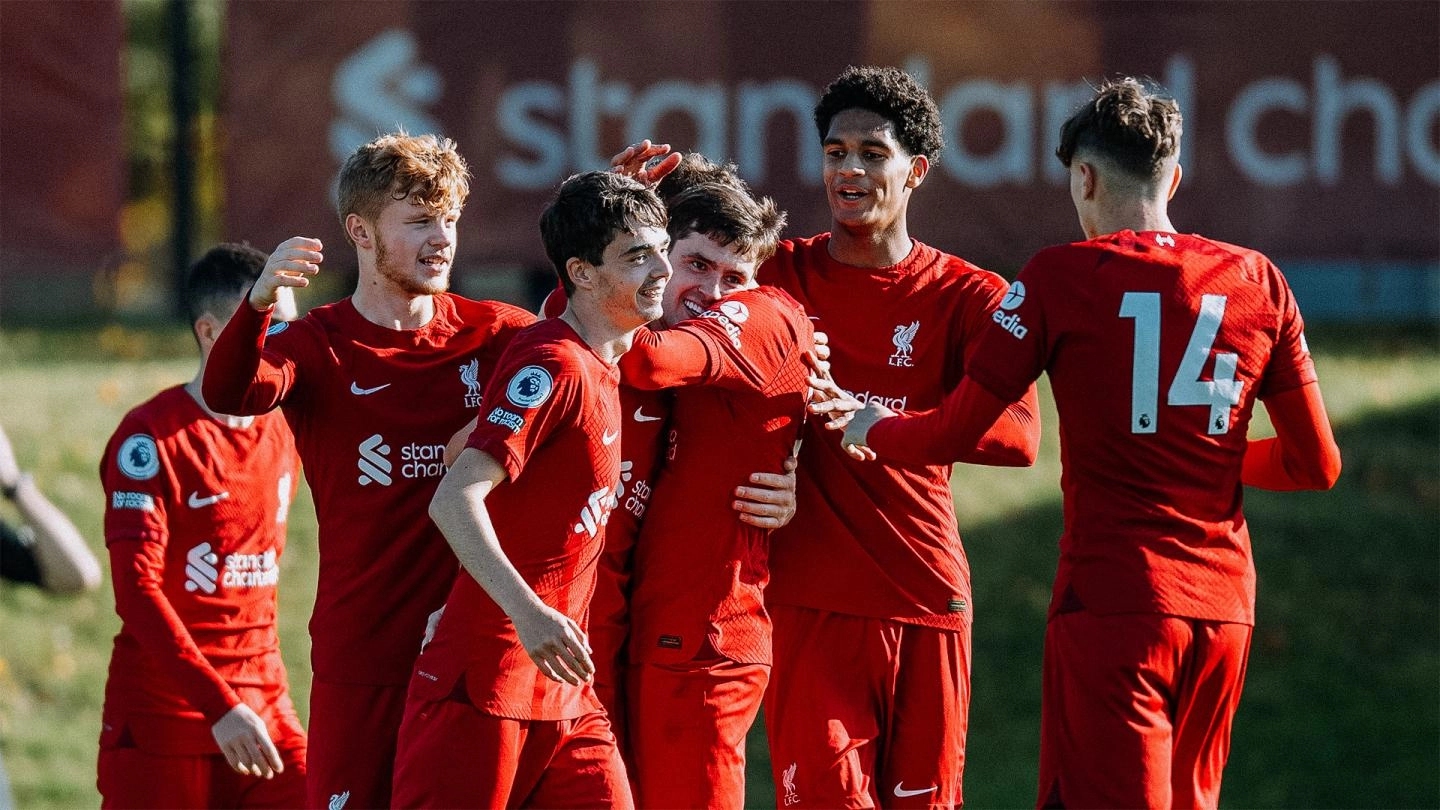AcademyGuide to the Premier League International Cup
Liverpool will kick off their Premier League International Cup campaign on Wednesday night – here's a lowdown on the tournament.
Format
Twenty-four teams are participating in 2022-23, with half from Premier League 2 and half from development squads across Europe.
They are split into three groups of eight for the opening stage and each match will pair a PL2 side against a European opponent.
The top two finishers in each section will progress to the knockout phase, joined by the two best third-placed teams.
The quarter-finals, semi-finals and final will be single-leg contests consisting of 90 minutes, with extra-time and a penalty shootout used as needed.
Opponents
The Reds will meet SC Braga, Dinamo Zagreb, Hertha BSC and Paris Saint-Germain in their four group-stage matches. All will be played at the Kirkby Academy.
They are in Group C, which also includes Crystal Palace, Everton and Stoke City.
Fixtures
Wednesday November 9 – v Dinamo Zagreb
Wednesday January 11 – v Paris Saint-Germain
Wednesday January 18 – v SC Braga
Wednesday February 1 – v Hertha BSC
All four ties kick off at 7pm GMT.
Who can play?
The tournament is for the U16 to U21 age groups, but clubs are able to call on over-age players – up to five outfield and one goalkeeper.
Other groups
Group A: Blackburn Rovers, Fulham, Leicester City, Wolverhampton Wanderers, Celtic, Porto, Valencia, Wolfsburg.
Group B: Arsenal, Brighton & Hove Albion, Manchester United, West Ham United, Feyenoord, Monaco, PSV Eindhoven, Sparta Prague.
As it stands
Everton and Palace are the early pace-setters in the section having each won both of their opening two matches, while Braga sit third after a victory and a defeat.
-
NewsVirgil van Dijk's message after Carabao Cup final defeat. Virgil van Dijk is confident Liverpool will produce a strong response after a 'difficult and disappointing' week.
-
ReactionCaoimhin Kelleher: We're bitterly disappointed - it's tough to take. Caoimhin Kelleher acknowledged Liverpool were very much second-best to Newcastle United in Sunday's Carabao Cup final.
-
VideosLiverpool 1-2 Newcastle: Watch Carabao Cup final match action and full replay. Watch extended match action and a full replay of Liverpool's 2-1 defeat against Newcastle United in the Carabao Cup final.
-
VideoLiverpool 1-2 Newcastle: Watch Carabao Cup final match action. Watch bitesize match action from Liverpool's 2-1 defeat by Newcastle United in the Carabao Cup final on LFCTV GO.
-
ReactionArne Slot press conference: Every word on Carabao Cup final defeat. Arne Slot conceded Liverpool were deservedly beaten as a result of a disappointing performance in their 2-1 Carabao Cup final defeat by Newcastle United at Wembley.
